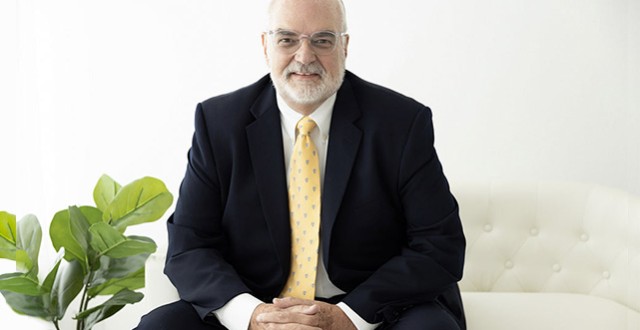
- Mediation
- Arbitration
- Court Neutrals
- Online Dispute Resolution
- Technology
- Court Decisions
- More
- Legislation
- Healthcare
- Guest Posts
- John DeGroote
- John C. Fleming
- Rick Freeman
- Professor Peter Friedman
- Honorable W. Royal Furgeson, Jr.
- James M. Gaitis
- Laura A. Kaster
- Professor John Lande
- Philip J. Loree, Jr.
- Michael McIlwrath
- F. Peter Phillips
- Professor Alan Scott Rau
- Professor Thomas J. Stipanowich
- Professor S.I. Strong
- Richard Webb
- Glen M. Wilkerson
- International arbitration
- Regulation
- Sports and Entertainment
- We’re Back!!!!Well, it’s been a while since we published and that is about to change. Since I spent much of last year becoming
 JAMS Welcomes Karl Bayer to its Panel of NeutralsJAMS, the world’s largest private alternative dispute resolution (ADR) provider, is pleased to announce that Karl Bayer
JAMS Welcomes Karl Bayer to its Panel of NeutralsJAMS, the world’s largest private alternative dispute resolution (ADR) provider, is pleased to announce that Karl Bayer Class Action Waivers in Arbitration Agreements: The Twenty-First Century Arbitration Battleground and Implications for the EU CountriesLinda S. Mullenix, Morris & Rita Atlas Chair in Advocacy at the University of Texas School of Law, has written “Class Ac
Class Action Waivers in Arbitration Agreements: The Twenty-First Century Arbitration Battleground and Implications for the EU CountriesLinda S. Mullenix, Morris & Rita Atlas Chair in Advocacy at the University of Texas School of Law, has written “Class Ac Picking the Proper Technological Tool for Problem-Solving in ArbitrationProfessor Amy J. Schmitz, John Deaver Drinko-Baker & Hostetler Chair in Law and Co-Director of the Translational Data An
Picking the Proper Technological Tool for Problem-Solving in ArbitrationProfessor Amy J. Schmitz, John Deaver Drinko-Baker & Hostetler Chair in Law and Co-Director of the Translational Data An
Recent Posts
Fifth Circuit Vacates Northern District of Texas Order Compelling Arbitration
The United States Court of Appeals for the Fifth Circuit has reversed a district court’s order compelling a proposed class action lawsuit to arbitration.
Continue reading...Cyber Intrusion As the Guerrilla Tactic: An Appraisal of Historical Challenges in an Age of Technology and Big Data
Arbitrator and Mediator Edna Sussman, Principal at SussmanADR, LLC and Distinguished ADR Practitioner in Residence at Fordham University School of Law, has published a useful and timely article titled “Cyber Intrusion As the Guerrilla Tactic: An Appraisal of Historical Challenges in an Age of Technology and Big Data,” Forthcoming, Jean Kalicki and Mohamed Abdel Raouf, eds., Evolution and Adaptation: The Future of International Arbitration, ICCA Congress Series No. 20 (Kluwer 2019).
Continue reading...Jay-Z Successfully Convinces NY Court to Issue TRO in AAA Arbitration Based on Lack of Arbitrator Diversity
Hip-hop musician Jay-Z has successfully convinced a New York judge to temporarily halt American Arbitration Association (“AAA”) arbitration proceedings based on a lack of arbitrator diversity.
Continue reading...Arbitrators and the Interpretation of Contacts
Professor Alan Scott Rau, Mark G. & Judy G. Yudof Chair in Law at the University of Texas at Austin School of Law, has published “Arbitrators and the Interpretation of Contacts,” American Review of International Arbitration, 2019 (Forthcoming).
Continue reading...Arbitration
The Beaumont Court of Appeals has reversed a Jefferson County district court’s order denying an energy company’s motion to compel arbitration.
Continue reading...Mediation
The Program on Negotiation at Harvard Law School is offering a free copy of Mediation Secrets for Better Business Negotiations: Top Techniques from Mediation Training Experts. The report contains helpful guidance on how to get the right mediator, understand the right steps, and ensure the right outcome. You may download the report here.
Continue reading...Healthcare Disputes
New Law Requires End-of-Life Discussion
By Holly Hayes Over opposition of the New York State’s medical society, last week, Gov. David A. Paterson signed a bill — the New York Palliative Care Information Act — which requires physicians treating patients with a terminal illness to “offer them or their representatives information about prognosis and options for end-of-life care, including aggressive pain management and hospice care as well as the possibilities for further life-sustaining treatment”. See the New York Times article here. A study last week in The New England Journal of Medicine found that among 151 patients newly diagnosed with metastatic lung cancer, those who chose to receive palliative care, or care focused on symptoms, as well as standard cancer therapy reported they had a better quality of life, they experienced less depression, they were less likely to be given aggressive end-of-life care and they lived approximately three months longer than patients who received only cancer treatment. In the August 2 issue of The New Yorker, Atul Gawande, authored an article titled, “Letting Go, What should medicine do when it can’t save your life?” See the full article here. Gawande is a surgeon and a writer, and is a staff member of Brigham and Women’s Hospital, the Dana Farber Cancer Institute, and the New Yorker magazine. Read more about Dr. Gawande here. His article gives riveting, detailed examples of our current approach to end-of-life care in the US. In April, we wrote about being able to say no to costly end-of-life care to improve end-of-life comfort care. See more here. We referenced William Ury’s book, The Power of a Positive No whose preface begins with a discussion of his daughter’s illness and his family’s “long journey through the medical system.” He says, “I realize the process has called on all of the skills I have learned over the years in helping others get to Yes with their negotiation issues. I also realized that, for me personally, the key skill I needed to develop to protect my daughter and our family was saying No.” Everyone says no, the difference for Ury was that “my Nos needed to be nice.” The New York law appears to be one step in the process of promoting open discussion about care options between physicians and patients. According to one palliative care expert, the law is not enough. Dr. Diane E. Meier, director of the Hertzberg Palliative Care Institute at Mount Sinai School of Medicine in New York, said in an interview that the law does not help doctors and nurses acquire the expertise they need to hold meaningful end-of-life discussions with their patients. To increase competency in palliative care, she said, courses in medical and nursing schools and a continuing-education requirement for practicing physicians are essential. “Doctors need to know how to identify when patients are on the decline, be able to initiate conversations with patients and/or family members, discuss what to expect in the future and the pros and cons of alternative care options, and know how to provide support as a patient’s illness progresses,” Dr. Meier said. Perhaps there is a role for dispute resolution experts in helping our nation’s caregivers develop “the expertise they need to hold meaningful end-of-life discussions with their patients”. We welcome your comments on this topic. Holly Hayes is a mediator at Karl Bayer, Dispute Resolution Expert where she focuses on mediation of health care disputes. Holly holds a B.A. from Southern Methodist University and a Masters in Health Administration from Duke University. She can be reached at holly@karlbayer.com.
Continue reading...Physician Survey Reports: 4.5% of Medical Liability Cases Resolved by ADR
By Holly Hayes An August American Medical Association (AMA) survey of 5,825 physicians illustrates a need for medical liability state and federal reforms. Survey responses indicated: 42.2% of physicians were sued, with 22.4% sued twice or more. Rates varied by specialty, but general surgeons and obstetrician-gynecologists were most likely to be sued (69.2%). Family physicians and general internists had similar rates (38.9% and 34%). Pediatricians and psychiatrists were sued the least. Physicians who had an ownership interest in a practice were at greater risk, with 47.5% reporting being sued, compared with 33.4% for those with no ownership interest. The majority of lawsuits never made it to the courtroom, according to 2008 data from the Physician Insurers Assn. of America, a trade group representing liability insurance companies owned or operated by physicians, hospitals and other health care professionals. Sixty-five percent were dropped, dismissed or withdrawn. About one in four claims was settled, and 4.5% were decided by alternative dispute mechanism. Of the 5% that went to trial, defendants won in 90% of cases, the PIAA said. But fighting a claim is costly. Defense against a claim averaged $22,163 for suits dropped, dismissed or withdrawn, and more than $100,000 for cases that went to trial, according to PIAA data. The frequency of medical liability lawsuits documented in the report illustrates the need for reforms at the state and federal levels, said AMA Immediate Past President J. James Rohack, MD. “Even though the vast majority of claims are dropped or decided in favor of physicians, the understandable fear of meritless lawsuits can influence what specialty of medicine physicians practice, where they practice and when they retire,” Dr. Rohack said in a statement. “This litigious climate hurts patients’ access to physician care at a time when the nation is working to reduce unnecessary health care costs.” In June, The Agency for Healthcare Research and Quality (AHRQ) announced that seven demonstration grants for the Medical Liability Reform and Patient Safety initiative have been funded for a total amount of $19.7 million. Thirteen planning grants have also been funded for a total amount of $3.5 million. The grants support the implementation and evaluation of evidence-based patient safety and medical liability projects. See more here. The seven demonstration grants include models that meet one or more of the medical liability reform and patient safety initiative goals, including: “Reducing preventable harms. Informing injured patients promptly, and making efforts to provide prompt compensation. Promoting early disclosures and settlement, through a court-directed alternative dispute resolution model.” Dr. Rohack said the AMA will continue to push for reforms, including tort reform that has proven effective in Texas. “‘We’re committed to lowering health care costs to make it affordable to all Americans, and ending defensive medicine is a big part of that,’” he said. We welcome your comments on the use of ADR in medical liability lawsuits. Holly Hayes is a mediator at Karl Bayer, Dispute Resolution Expert where she focuses on mediation of health care disputes. Holly holds a B.A. from Southern Methodist University and a Masters in Health Administration from Duke University. She can be reached at holly@karlbayer.com.
Continue reading...Legal Research
About Disputing
Disputing is published by Karl Bayer, a dispute resolution expert based in Austin, Texas. Articles published on Disputing aim to provide original insight and commentary around issues related to arbitration, mediation and the alternative dispute resolution industry.
To learn more about Karl and his team, or to schedule a mediation or arbitration with Karl’s live scheduling calendar, visit www.karlbayer.com.













